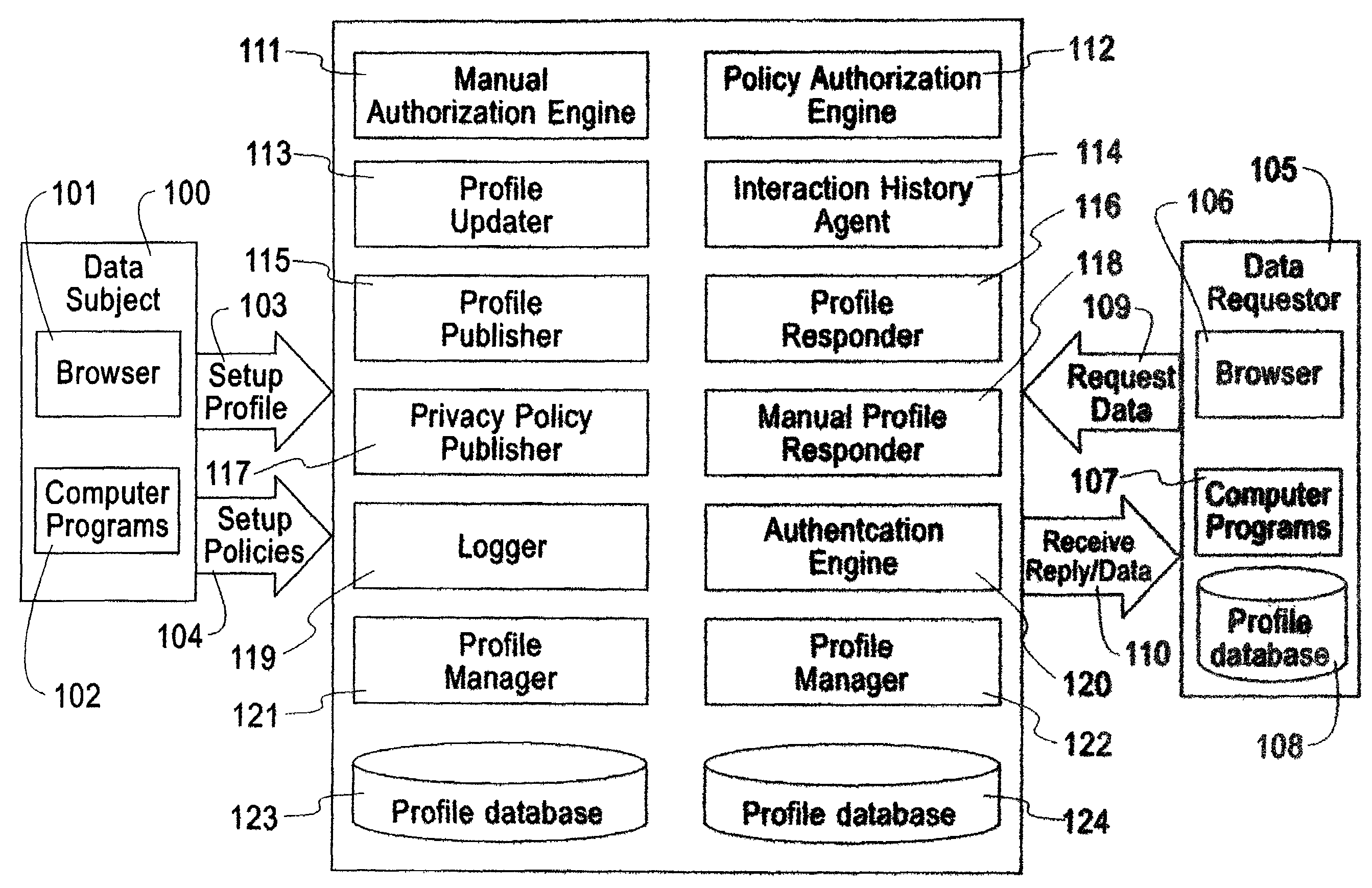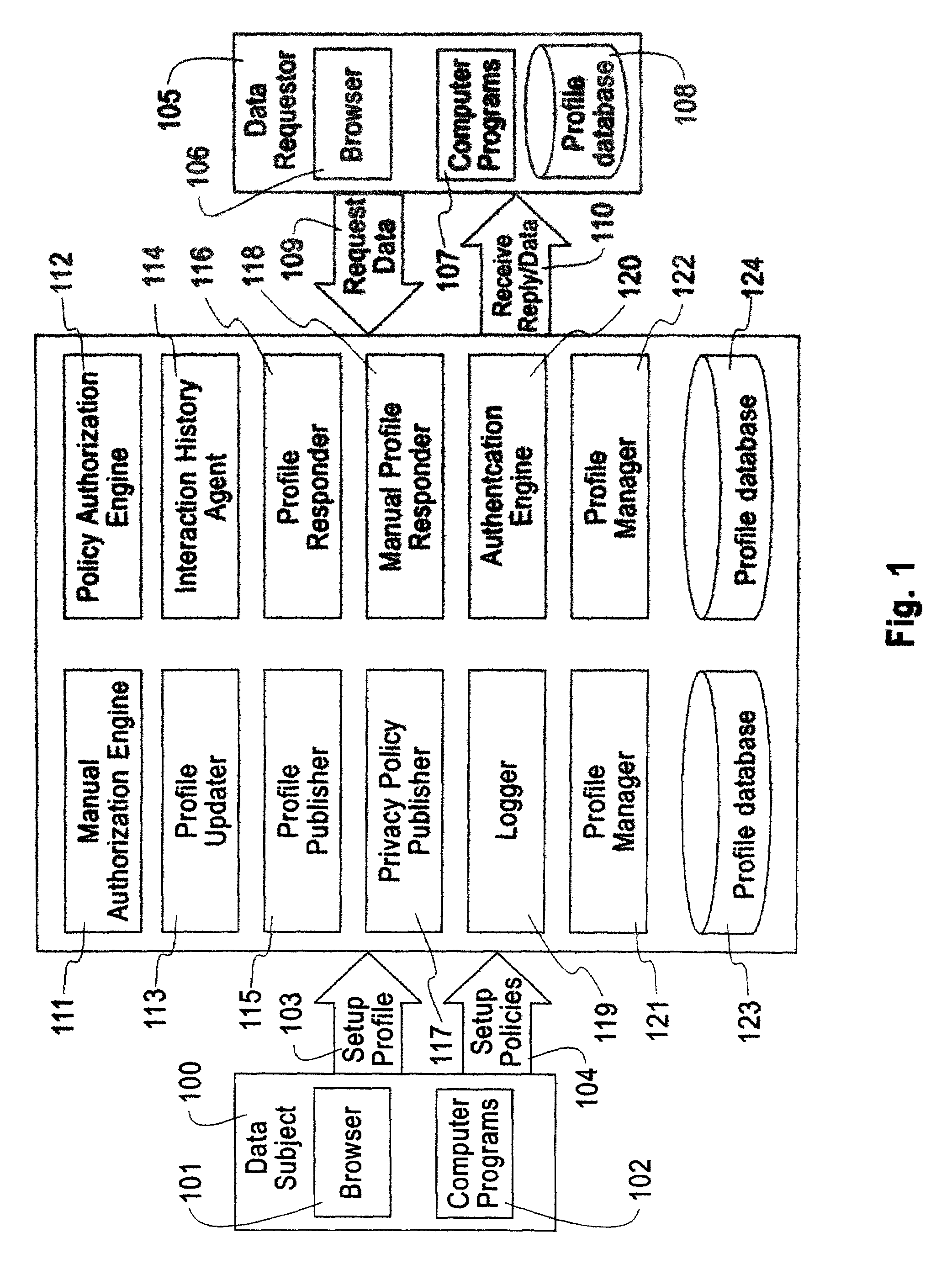System, method, and business methods for enforcing privacy preferences on personal-data exchanges across a network
a technology of personal data and privacy preferences, applied in the field of privacy for information handling across a network, can solve the problems of limited amount of privacy control, warning to users, and inability to expect all this data to be collected in one central repository
- Summary
- Abstract
- Description
- Claims
- Application Information
AI Technical Summary
Problems solved by technology
Method used
Image
Examples
Embodiment Construction
[0027]The invention involves the use of computers and networks. It is not limited as to the type of computers used, and not limited as to the type of networks used. Various implementation methods may be used for the present invention. The invention involves information that is communicated between computers; this information could be in hypertext markup language (HTML), or extensible markup language (XML), e-mail, or some other language or protocol could be used.
[0028]FIG. 1 is a block diagram illustrating an embodiment of the present invention. This embodiment supports the enforcement of privacy preferences in data exchanges according to authorization checks based on the privacy preferences specified by a data subject with the privacy policies of a data requester.
[0029]The Data Subject 100 can use a web browser 101 to setup one or more profiles via communication links 103, such as HTTP requests. Similarly, the Data Subject can use a web browser to set up one or more privacy policie...
PUM
 Login to View More
Login to View More Abstract
Description
Claims
Application Information
 Login to View More
Login to View More - R&D
- Intellectual Property
- Life Sciences
- Materials
- Tech Scout
- Unparalleled Data Quality
- Higher Quality Content
- 60% Fewer Hallucinations
Browse by: Latest US Patents, China's latest patents, Technical Efficacy Thesaurus, Application Domain, Technology Topic, Popular Technical Reports.
© 2025 PatSnap. All rights reserved.Legal|Privacy policy|Modern Slavery Act Transparency Statement|Sitemap|About US| Contact US: help@patsnap.com



